If you’re anything like me when I first considered installing solar, you wondered “Exactly how much space will I need for solar panels?” That’s a fantastic question and we’re here to help answer it!
The area needed for solar panels is largely dependent on the amount of electricity you aim to generate. Usually, for a typical residential solar installation, about 300 to 500 square feet of space is needed. However, various factors can influence this, which we’ll cover in detail below.
Solar panels aren’t one-size-fits-all. Their size depends on the type of solar panel and the energy efficiency of the solar cells contained within.
On average, residential solar panels measure about 65 inches by 39 inches, covering an area of approximately 17.5 square feet. Typically, each panel generates around 265 watts under optimal conditions.
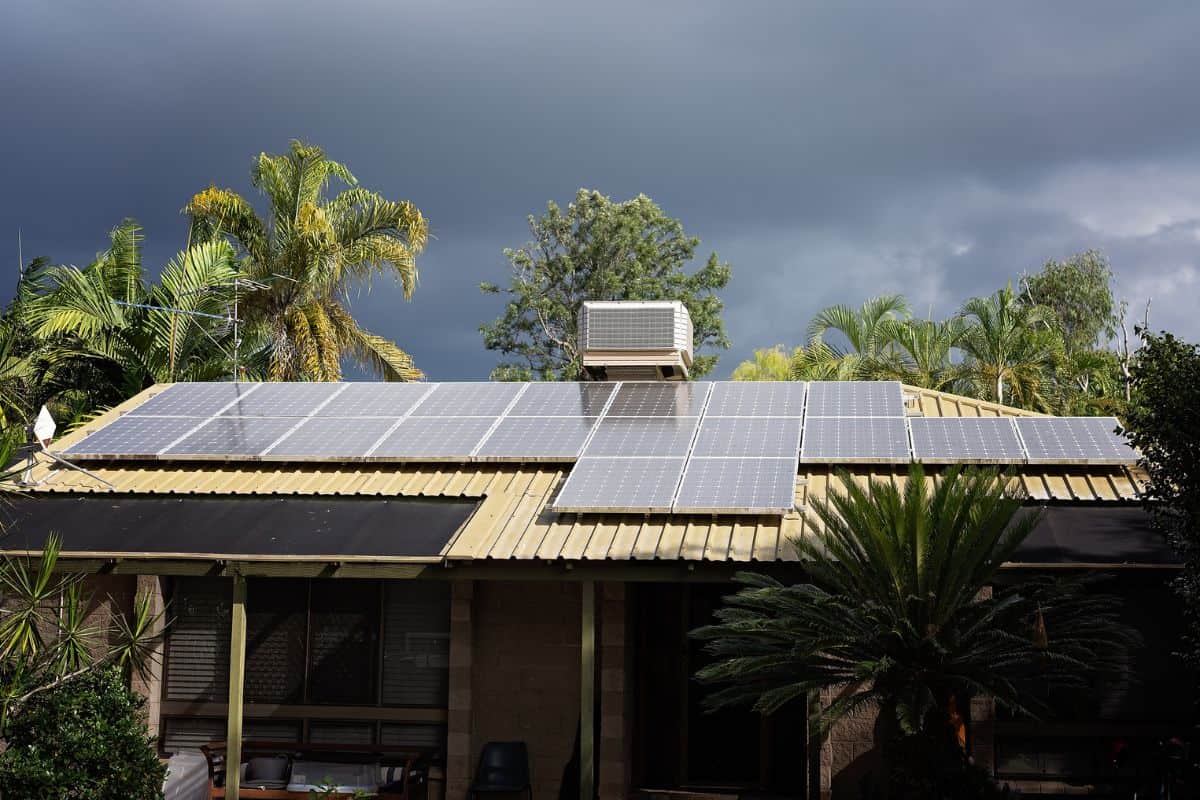
To give you a clearer idea of space requirements, consider this example. Let’s say you aim to generate 5kW of solar power for your home.
Since each solar panel generates roughly 265 watts, you’d need about 19 panels. Each panel takes up around 17.5 square feet. That means you’d need approximately 332.5 square feet of space for a 5kW system.
The factors that will impact how much space you need
The amount of sunlight your location receives is a major factor too. The more sunlight your area gets, the less space you might need, as each panel can generate more power.
Your energy goals matter as well. If you aim to offset just a portion of your energy usage, you’ll need fewer panels than if you aim to go entirely off-grid.
Understanding your energy consumption patterns can help you estimate how much power you need to generate. From there you can calculate how much space your solar panels might require.
Solar panel efficiency has been improving over the years.
Higher-efficiency panels generate more power in a given amount of space, which means you might need fewer of them.
Always consider the efficiency rating of the solar panels when planning your solar installation.
Your roof’s orientation and tilt, as well as the presence of any shading or obstructions, can also influence the space required.
A south-facing roof with little to no shade usually provides the best conditions for solar panels in the northern hemisphere.
Remember, while we have used a roof-mounted system for our discussion, solar panels can also be installed on the ground if your property has sufficient space.
This might be a suitable alternative if your roof doesn’t have the ideal conditions for solar installation. We’ll discuss that in a bit more detail later on in this article.
Let’s dig into this in a bit more detail
How much roof space is needed to install solar panels for an average-sized home?
To start with it’s important to understand the solar panel space needs for an average-sized home.
Rooftop solar installations are commonly seen in residential areas, but the space required can vary based on several factors. These include the wattage of the panels, the energy needs of your household, and the geographical location of your home.
The typical home in the United States consumes approximately 10,000 kilowatt-hours (kWh) of electricity each year. To fully offset this consumption with solar energy, you’d need a solar system that can produce this same amount.
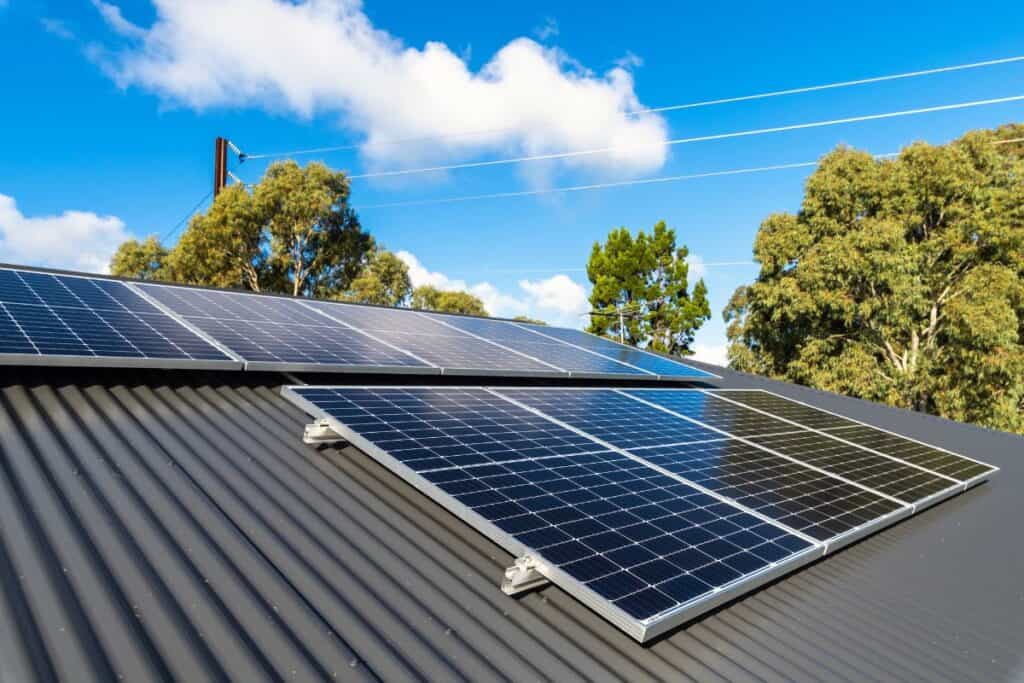
Let’s dive into a specific example to better illustrate this. Suppose you live in a region that receives about 5 hours of peak sunlight daily. To produce 10,000 kWh annually, you would need a 5 kW solar system.
The average solar panel has a power output of around 300 watts. To achieve a 5 kW solar system, you’d need roughly 17 solar panels. Given that an average solar panel measures around 65 inches by 39 inches (or 17.5 square feet), you’d need about 298 square feet of roof space for your solar installation.
This calculation assumes that your roof is ideally situated and has no obstructions such as chimneys or skylights. All of these can reduce the area available for solar panels.
The pitch and orientation of your roof also impact how many panels you can install. A south-facing roof is ideal in the Northern Hemisphere. The angle of the roof can affect the amount of sunlight the panels receive.
Energy-efficient homes help
Your home’s energy needs may differ from the average. If your home is more energy-efficient, or if you use less electricity, you may require fewer panels. Conversely, if your energy needs are higher, you may require more panels.
It’s important to remember that these calculations provide a rough estimate.
For a more accurate assessment of how much roof space you’ll need for solar panels, it’s advisable to consult with a local solar installer. They can analyze your specific circumstances and provide a tailored estimate.
But what if you don’t have enough roof space? You may be wondering what some of the other alternatives are.
Can solar panels be installed in a yard if there’s not enough roof space?
Can your yard step up as a viable alternative for solar panel installation? Let’s find out!
Yes, they can. When rooftop installations are impractical or impossible due to limited space or poor orientation, ground-mounted solar panels in your yard can be a great alternative. However, there are certain factors to consider before you opt for this route.
Firstly, ensure you have enough unshaded yard space. Just like rooftop installations, the size of the solar system you can install will depend on your household energy usage and the amount of sunlight you receive.
A yard with a lot of shade from trees or buildings may not be suitable for a solar installation.
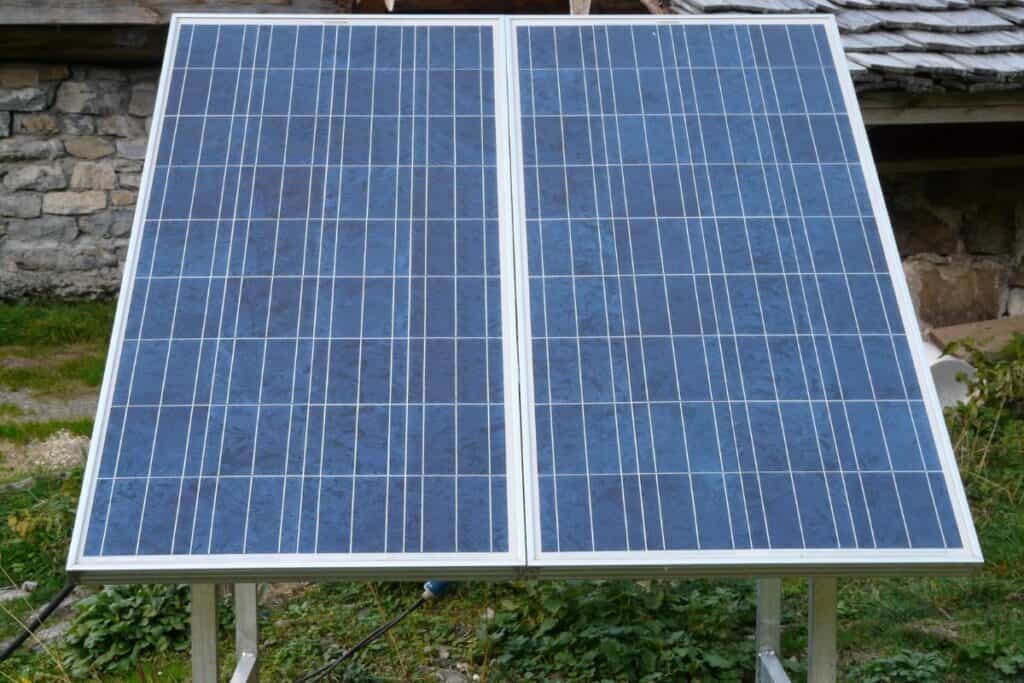
Secondly, consider the orientation of the panels. Solar panels are most efficient when they face towards the equator, so in the northern hemisphere, that’s south-facing.
The advantage of ground-mounted solar panels is that they can be adjusted and positioned at the perfect angle to capture maximum sunlight. This isn’t always possible with rooftop panels.
Thirdly, you need to look into local zoning laws and HOA rules.
Some areas might have restrictions on ground-mounted solar installations, particularly if they’re visible from the street. It’s essential to understand these regulations before installing solar panels in your yard to avoid any potential legal issues.
Maintaining your panels when space is tight
Lastly, remember to factor in maintenance. Ground-mounted solar panels can be easier to clean and maintain than rooftop panels. They might also be more susceptible to damage from children, pets, wildlife, or yard maintenance activities.
Let’s put things in perspective with an example. If your home uses the U.S. average of 10,000 kWh per year and you’re installing standard 300W panels, you would need around 17 panels.
Assuming you maintain a distance of about a couple of feet between each panel for maintenance access, you’re looking at roughly 450 square feet of yard space.
The initial installation cost for ground-mounted solar panels can be higher than for rooftop panels, as they require additional materials and labor. However, the increased efficiency from optimal positioning can often lead to greater energy production and faster return on investment.
Installing solar panels in your yard can be a fantastic alternative if your rooftop isn’t suitable. With careful planning and consideration, your yard can be transformed into a productive solar energy hub!
That said, where you install your solar panels and how many you install will depend on the amount of sunlight your property gets.
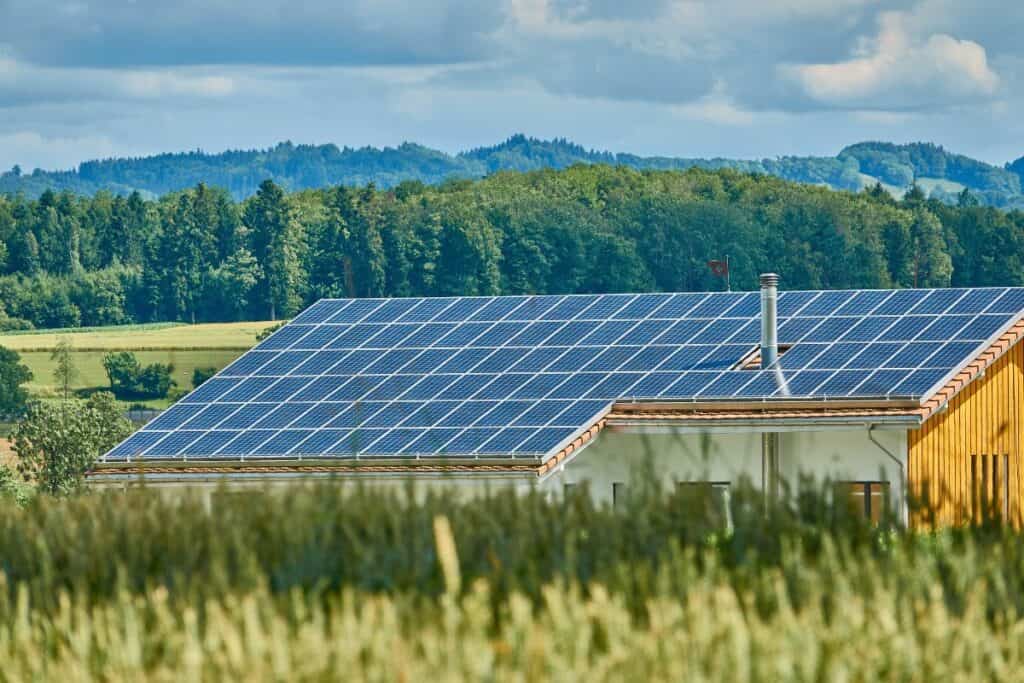
How does the amount of sunlight my property receives affect the space required for solar panels?
The answer is a definite ‘yes’. But how exactly does this sun-space relationship work? Let’s unravel this interesting solar puzzle.
The quantity and quality of sunlight your property receives directly affect the efficiency of your solar panels and consequently, the space needed for them.
If your property receives abundant sunlight throughout the day, your panels can capture more solar energy, reducing the number of panels needed, and hence the space required.
On the contrary, if your property doesn’t get as much sun, you may need more panels to meet your energy needs, leading to more space being used.
However, it’s not just the quantity of sunlight that matters. The quality, in terms of the intensity of the sun, also plays a crucial role.
For instance, if your property is in a region with high solar intensity (like Arizona or California), even a small rooftop might be sufficient for a solar installation.
But for a home in less sun-intensive areas (like Washington or Oregon), more panels, and thus more space, might be required to generate the same amount of energy.
High vs low solar intensity when it comes so solar installation space
Let’s explore this with an example. Consider two houses, both consuming 10,000 kWh per year. House A is located in sunny Arizona and receives around 6 hours of peak sun per day.
With standard 300W panels, House A would need about 17 panels, which translates to approximately 300 square feet of space. House B, in cloudy Washington, receives only 4 hours of peak sun. Therefore, it would need about 26 panels, taking up around 460 square feet.
Keep in mind that these are general estimates, and the actual number can vary depending on the specific type of solar panels used, the angle at which they’re installed, and other local factors like cloud cover and temperature.
Besides the location, the time of the year also affects the sunlight your property receives. During winter, the days are shorter, and the sun is lower in the sky, which reduces the solar energy your panels can capture. Planning for these seasonal variations can ensure your solar system provides consistent power throughout the year.
In conclusion, the amount and quality of sunlight your property gets significantly influence the space needed for solar panels. To get an accurate estimate, it’s best to consult with a solar installation professional who can perform a detailed analysis of your property and solar potential.
How do the type and efficiency of solar panels impact the space needed for installation?
That is an important question to ask, especially if you have space constraints for your solar installation. Let’s take a deeper look into how these aspects interact and influence your solar setup.
The type of solar panel you choose has a direct bearing on the space you need for installation. Broadly, solar panels come in three types: monocrystalline, polycrystalline, and thin-film.
Monocrystalline panels, known for their high efficiency, generate the most power per square foot, thereby requiring less space.
Polycrystalline panels, although less efficient, are cost-effective and can be a good choice if space isn’t a constraint. Thin-film panels require the most space due to their lower efficiency, but they are lightweight and can be used in areas where weight is a concern.
The term ‘efficiency’ in solar panels refers to the amount of sunlight that can be converted into usable electricity.
Higher-efficiency panels convert a greater percentage of sunlight into power, reducing the number of panels, and consequently, the space needed for installation.
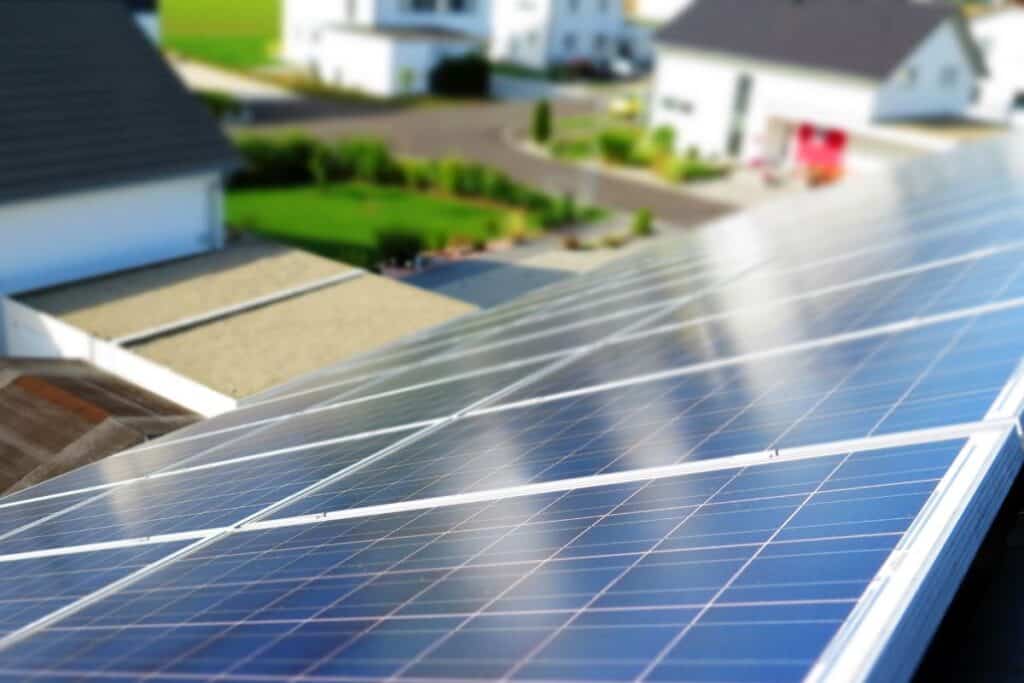
For example, if you opt for high-efficiency monocrystalline panels rated at 20% efficiency, you’d need fewer panels to generate the same amount of power as polycrystalline panels rated at 15% efficiency.
This could mean a significant reduction in the total installation space. However, higher efficiency often comes with a higher price tag, so it’s essential to balance your space availability, energy needs, and budget when choosing solar panels.
The importance of solar panel efficiency
Consider two houses, each requiring 5kW of power. House A chooses high-efficiency panels with an efficiency of 20%, while House B opts for standard panels with an efficiency of 15%.
House A would require about 20 panels, which would take up around 350 square feet, while House B would need approximately 27 panels, requiring about 470 square feet of space.
This illustrates how the efficiency of the panels can significantly influence the space required.
However, the type and efficiency of solar panels are not the only factors affecting space. The orientation and tilt of the panels, local weather conditions, and shading on your property can all impact the actual power output and the space needed.
While the type and efficiency of your solar panels significantly influence the space required for installation, other factors must also be considered for an accurate estimation.
An experienced solar installer can guide you through the process and help you choose the most suitable panels for your property, energy needs, and budget.
How to estimate how much space your solar installation will require
When you’re planning a solar panel installation, you might wonder: “Just how much space are we talking about here?” Let’s delve into this, so you can gauge how much area you’ll need to earmark for your solar system.
As a general rule of thumb, a standard solar panel measures about 65 inches by 39 inches (5.4 feet by 3.25 feet), or 17.5 square feet. Therefore, if you’re thinking about how many of these you’ll fit into a given area, it’s a simple calculation of the total area divided by 17.5.
But how many solar panels do you need? This answer isn’t as simple, as it hinges on your energy usage and the specific efficiency of the panels you choose.
For instance, if your goal is to generate 5kW of power, you’ll need about 20 standard-efficiency solar panels (250W each). This means you’d require approximately 350 square feet of space.
But let’s dive a bit deeper with some practical examples. Consider two homes, each with different energy consumption levels.
An example of two homes…
Home A uses about 500 kWh per month, while Home B uses 900 kWh per month. Using standard-efficiency panels, Home A would require about 15 panels, thereby taking up roughly 262.5 square feet of space. In contrast, Home B, with its higher energy usage, would need around 27 panels, requiring about 472.5 square feet.
Keep in mind, these estimates are rough and based on several assumptions. It uses average sunlight exposure of 5 hours per day and no shading or other physical obstructions.
If your property gets less sun or has considerable shading, you might need more space to install additional panels to achieve your energy goals.
In the end, while these calculations give a basic understanding of how much space solar panels could require. It’s always best to consult with a solar professional.
They can provide a more accurate estimate based on your home’s specific conditions, local climate, and your energy usage.
In conclusion, the space required for solar panel installation will significantly depend on your energy needs, the type of panels you choose, and local conditions.
However, even with these variables, solar power remains a viable and sustainable energy option for many homeowners and businesses. As solar technology advances, we’re likely to see even more efficient panels that can generate more power in less space.
